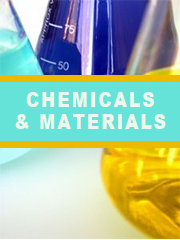Report overview
Carbon Fiber Reinforced Polymer Composites (CFRP) are lightweight, strong materials used in the manufacturing of numerous products used in our daily life. In general, CFRP composites use thermosetting resins such as epoxy, polyester, or vinyl ester.
Pressure vessel composite materials are used in manufacturing pressure vessels that are used to store gases and liquids under high pressure. The strength of the vessel is the critical parameter to prevent explosions as a result of the rupture. A composite material is a combination of materials differing in composition or form on a macro scale. These materials do not dissolve or otherwise merge completely into each other. Composite materials help to improve the performance and also offers a significant amount of material savings.
Since 1970 pressure vessel manufacturers have been using continuous fibers filaments, also known as tows or roving, to improve the physical properties of pressure vessels. Starting with what the industry calls a type II vessel; high strength fibers, such as glass fiber, were wrapped around the cylindrical sections of steel and aluminum pressure vessels to add reinforcement allowing a roughly 30% reduction in overall vessel mass.
As the fiber reinforcement became more and more significant in pressure vessel design, fiber manufacturers began refining their offerings and experimenting with new fiber types like carbon fiber, which is currently the most popular reinforcement in composite pressure vessels, because of its incredible stiffness and tensile strength. In addition to carbon and glass, new fibers were created such as Kevlar a type of aramid fiber and basalt fiber. These new fibers offered contrasting mechanical properties such as impact resistance, and low temperature resistance to the pressure vessel designer?s arsenal.
As new composite pressure vessel applications emerged, the need for unique mechanical properties and increasing economic pressures create a need for hybrid vessels which could either use distinct and separate layers of fiber for different roles such as impact/ abrasion resistance, or different fibers in the same band to get the properties of both fibers throughout the laminate.
The evolution of vessels and tanks designed to hold liquids and gases under pressure has proceeded through four distinct stages: all-metal tanks (Type I), metal hoop-wrapped composite tanks (Type II), metal-lined composite tanks (Type III) and plastic-lined composite tanks (Type IV). The fifth stage, an all-composite, linerless Type V tank has been the pressure vessel industry?s Holy Grail for years.
This report contains market size and forecasts of Carbon Fiber Pressure Vessel in global, including the following market information:
Global Carbon Fiber Pressure Vessel Market Revenue, 2018-2023, 2023-2030, ($ millions)
Global Carbon Fiber Pressure Vessel Market Sales, 2018-2023, 2023-2030, (K Units)
Global top five Carbon Fiber Pressure Vessel companies in 2022 (%)
The global Carbon Fiber Pressure Vessel market was valued at 583.2 million in 2022 and is projected to reach US$ 1166.6 million by 2030, at a CAGR of 10.4% during the forecast period 2023-2030.
The U.S. Market is Estimated at $ Million in 2022, While China is Forecast to Reach $ Million by 2030.
Type III Segment to Reach $ Million by 2030, with a % CAGR in next six years.
The global key manufacturers of Carbon Fiber Pressure Vessel include Luxfer Group, Iljin Composites Corp, Faber Industrie SpA, Worthington Industries, 3M Scott, Shenyang Gas Cylinder, Toyota, Sinoma Science & Technology and Beijing China Tank Industry, etc. In 2022, the global top five players have a share approximately % in terms of revenue.
MARKET MONITOR GLOBAL, INC (MMG) has surveyed the Carbon Fiber Pressure Vessel manufacturers, suppliers, distributors and industry experts on this industry, involving the sales, revenue, demand, price change, product type, recent development and plan, industry trends, drivers, challenges, obstacles, and potential risks.
Total Market by Segment:
Global Carbon Fiber Pressure Vessel Market, by Type, 2018-2023, 2023-2030 ($ Millions) & (K Units)
Global Carbon Fiber Pressure Vessel Market Segment Percentages, by Type, 2022 (%)
Type III
Type IV
Others
Global Carbon Fiber Pressure Vessel Market, by Application, 2018-2023, 2023-2030 ($ Millions) & (K Units)
Global Carbon Fiber Pressure Vessel Market Segment Percentages, by Application, 2022 (%)
CNG Storage Tank
SCBA/SCUBA
Hydrogen Storage Tank
Others
Global Carbon Fiber Pressure Vessel Market, By Region and Country, 2018-2023, 2023-2030 ($ Millions) & (K Units)
Global Carbon Fiber Pressure Vessel Market Segment Percentages, By Region and Country, 2022 (%)
North America
US
Canada
Mexico
Europe
Germany
France
U.K.
Italy
Russia
Nordic Countries
Benelux
Rest of Europe
Asia
China
Japan
South Korea
Southeast Asia
India
Rest of Asia
South America
Brazil
Argentina
Rest of South America
Middle East & Africa
Turkey
Israel
Saudi Arabia
UAE
Rest of Middle East & Africa
Competitor Analysis
The report also provides analysis of leading market participants including:
Key companies Carbon Fiber Pressure Vessel revenues in global market, 2018-2023 (Estimated), ($ millions)
Key companies Carbon Fiber Pressure Vessel revenues share in global market, 2022 (%)
Key companies Carbon Fiber Pressure Vessel sales in global market, 2018-2023 (Estimated), (K Units)
Key companies Carbon Fiber Pressure Vessel sales share in global market, 2022 (%)
Further, the report presents profiles of competitors in the market, key players include:
Luxfer Group
Iljin Composites Corp
Faber Industrie SpA
Worthington Industries
3M Scott
Shenyang Gas Cylinder
Toyota
Sinoma Science & Technology
Beijing China Tank Industry
AMS Composite Cylinders
Beijing Tianhai Industry
Teijin Engineering Limited
NPROXX
Doosan
